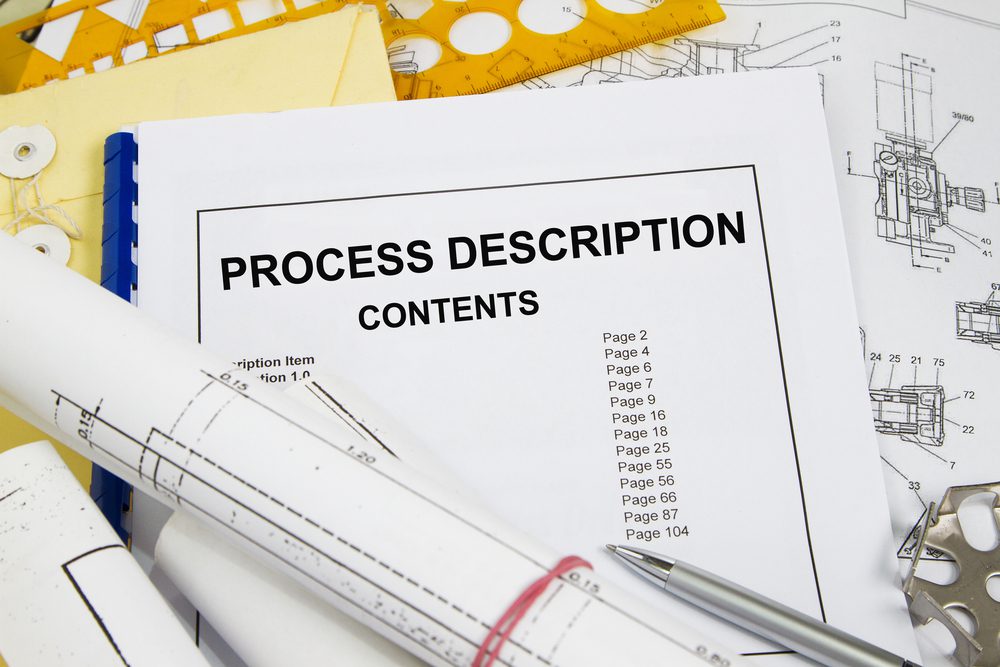
Industrial maintenance teams face growing pressure to increase efficiency, improve safety, and reduce maintenance costs. Yet in many organizations, maintenance operations are chaotic – decisions are made inconsistently, tasks are poorly defined, and performance varies between technicians and shifts.
Maintenance standards provide a structured framework for ensuring that maintenance activities are consistent, effective, and follow best practices. In this article, we’ll explore maintenance standards and how they shape day-to-day maintenance operations.
What are Maintenance Standards?
Maintenance standards are best practices and frameworks that outline recommended methods for planning, performing, and documenting maintenance tasks. They define and document how maintenance work should be done to ensure its carried out efficiently, consistently, and safely. Maintenance standards are meant to be repeatable and reusable so that the approach stays consistent no matter who is doing the work or where it’s being done. Some standards focus directly on performing tasks, while others address supporting processes and systems that support maintenance operations.
Maintenance standards may be voluntary or mandatory, depending on how they are applied. Many standards – such as those developed by the International Organization for Standardization (ISO) – are voluntary, meaning that organizations choose to follow them. However, maintenance standards become mandatory when they are written into laws, regulations, or contract requirements. In those cases, failure to comply can result in legal or financial consequences.
Even when not legally required, some standards become widely expected in competitive industries. For example, ISO 9001 certification is not legally required, but many organizations pursue it to meet customer expectations or to qualify for business opportunities. In this sense, compliance is “mandatory” from a business standpoint.
Benefits of Maintenance Standards

Though compliance may sometimes feel like just another box to check, following maintenance standards delivers real, practical value. Maintenance standards are developed by experienced professionals and experts and incorporate tried-and-true methods for performing maintenance tasks, applying technology, and managing complex operations. They provide a clear point of reference for comparing your team’s practices to industry best practices, helping to ensure that everyone is doing things the “right” way.
Maintenance teams that adhere to proven maintenance standards gain the following benefits:
- Increased asset reliability as a result of proactive and consistent maintenance
- Lower maintenance costs through improved efficiency and less rework
- Less unplanned downtime because repairs and troubleshooting follow proven processes
- Fewer safety risks due to the implementation of proper safety protocols
- Easier audits and inspections with well-documented service history and maintenance procedures
- Better accountability because everyone knows what is expected of them
- Improved maintenance culture that supports teamwork and continuous improvement
Types of Maintenance Standards You Should Know
There are a seemingly infinite number of maintenance standards that cover the practices, processes, tools, and technology used in maintenance management. While this section provides an extensive list, it would not be reasonable to expect one person to know or be familiar with them all. Our goal is to draw attention to the maintenance standards you are most likely to encounter, organized by area of operation, to help you focus on what matters most for your business and role.
Asset Maintenance and Operations Standards
The following standards are focused on equipment reliability and safe operation, and provide structured guidance for maintaining and managing assets throughout their life cycles. They help maintenance teams plan, document, and execute work in ways that maximize asset value and performance.
- ISO 55000 Series: Provides guidance to help organizations effectively manage assets over their life cycles.
- NFPA 70B: Establishes requirements for maintaining electrical systems and equipment.
- NFPA 70E: Establishes best practices for electrical safety.
- IEC 61511/ISA84: Sets requirements for safety instrumented system (SIS) lifecycle management.
- FAA Part 145/EASA Part 145: Outlines requirements for maintenance organizations seeking approval to perform aircraft maintenance.
- ISO 13374: Establishes general guidelines for condition monitoring software systems.
Quality and Process Compliance Standards
The standards listed below ensure highly regulated industries, such as food and beverage and pharmaceuticals, meet rigorous quality requirements and comply with regulatory requirements. Maintenance teams must follow these standards to support validated systems and uphold product quality.
- ISO 9001: Establishes a framework for implementing a quality management system (QMS).
- ISO 13485: Specifies requirements for quality management systems for medical devices.
- Good Manufacturing Practices (GMP): Establishes minimum quality requirements for food, pharmaceuticals, and other FDA-regulated industries.
- Good Laboratory Practices (GLP): Establishes minimum quality requirements for non-clinical laboratory studies.
- Good Clinical Practices (GCP): Establishes minimum quality requirements for clinical laboratory studies.
- Good Automated Manufacturing Practices (GAMP 5): Provides a framework for validating computerized systems used in pharmaceutical manufacturing.
Data Integrity and Cybersecurity Standards
These standards establish rules for managing electronic systems, information security, and cloud services in order to protect sensitive data and ensure the integrity of digital records. They ensure that maintenance data, the systems that store and process data, and the IT environment hosting software are secure.
- FDA 21 CFR Part 11: Governs the use of electronic records and electronic signatures.
- ISO/IEC 27001: Specifies requirements for information security management systems (ISMS).
- NIST SP 800-171: Outlines requirements for protecting sensitive information on non-federal information systems.
- Federal information Security Management Act (FISMA): Requires federal agencies – and the vendors and contractors that serve them – to protect federal data and information systems using defined standards.
- Federal Risk and Authorization Management Program (FedRAMP): Standardizes security assessment for cloud services used by federal agencies.
Read Also: What FDA 21 CFR Part 11 Compliance Means for Maintenance Teams
Corporate Governance and Legal Compliance Standards
This set of regulations supports ethical business practices and restrict access to sensitive or classified information. Maintenance organizations may be impacted through audit requirements, documentation controls, and access restrictions.
- Sarbanes-Oxley Act (SOX): Requires transparency in financial reporting and control over financial data.
- International Traffic in Arms Regulation (ITAR): Restricts access of sensitive, defense-related information to U.S. citizens only.
Health, Safety, and Environmental Compliance Standards
Health, safety, and environmental (HSE) standards define requirements for workplace safety, air quality, and environmental responsibility. Maintenance teams must implement the procedures outlined in these standards to minimize hazards and risk in the workplace and environment.
- Occupational Safety and Health Administration (OSHA) maintenance standards: Sets and enforces regulatory standards for workplace safety and health.
- Clean Air Act: Regulates air emissions and air quality.
- ANSI/ASSP Z10 and ISO 45001: Establishes requirements for occupational health and safety management systems.
Who Creates Maintenance Standards?

Maintenance standards come from many places. Some are created by professional organizations or regulatory groups, while others are developed in-house by maintenance teams to fit their specific needs.
Industry-wide Standards Organizations
Industry-wide standards are typically developed, accredited, or supported by national or international professional associations and governing bodies. These groups exist to promote safety, consistency, and accountability across industries while helping organizations maintain high product quality. Listed below are some of the many organizations that develop maintenance standards:
- International Organization for Standardization (ISO): Develops and publishes international standards, informed by input from technical committees made up of experts from member countries.
- American National Standards Institute (ANSI): Accredits the development of U.S. standards to ensure they follow a transparent process and align with international ones.
- International Electrotechnical Commission (IEC): Develops and publishes international standards for electrical, electronic, and related technologies.
- National Institute of Standards and Technology (NIST): A U.S. government agency that develops standards primarily for use by federal agencies and contractors.
- Occupational Safety and Health Administration (OSHA): Creates and enforces legally binding regulations related to workplace safety in the United States.
- Society for Maintenance and Reliability Professionals (SMRP): Develops best practices and frameworks for maintenance, reliability, and physical asset management.
- ASTM International (formerly the American Society for Testing and Materials): Develops voluntary standards for a wide range of materials, products, systems, and services.
- American Society for Quality (ASQ): Collaborates in the development of standards related to quality assurance, process improvement, and risk management.
This list isn’t exhaustive – many other organizations develop and publish standards for specific industries. Examples include SAE International (formerly the Society of Automotive Engineers) and the American Society of Mechanical Engineers (ASME).
In-House Standards Development
Many maintenance organizations also develop their own internal maintenance standards. While these may draw on international standards, they benefit from being grounded in in-house historical work order data, warranty information, and manufacturer guidelines. This makes in-house standards well-suited for creating standard maintenance procedures (SMPs) and preventive maintenance schedules that are tailored to the unique needs of the organization’s equipment, processes, and facilities.
Best Practices for Complying with Maintenance Standards
Complying with numerous maintenance standards isn’t always easy – and for many, it’s not optional. While it may feel overwhelming at first, compliance pays dividends in terms of smoother operations and stronger performance. Taking a proactive approach to compliance also helps ease the burden by establishing good practices and reducing unexpected emergencies. Below are a few best practices for complying with maintenance standards.
Implement a CMMS
A computerized maintenance management system (CMMS) provides a centralized platform for keeping detailed maintenance records, including asset condition, PM schedules, and maintenance history. Documenting maintenance activities in a single system makes it easy to access and review maintenance records, especially when it comes time for maintenance audits.
Read: Why You Shouldn’t Fear Maintenance Audits
Create or Revisit Maintenance Plans with Compliance in Mind
Whether you’re building a new maintenance strategy or reviewing existing documentation, take time to ensure it supports compliance goals. Aligning your maintenance plan with regulatory and industry maintenance standards helps you hit performance goals, avoid costly mistakes, and feel more confident when audit time comes around.
Invest in Ongoing Training
Regular training ensures your team stays informed about changes in maintenance standards and regulations, helping maintain consistency and compliance. Keeping everyone up-to-date on the latest best practices and requirements also helps reduce errors, improve efficiency, and better prepare for audits. Employees should also be encouraged to obtain or renew certifications that enhance their knowledge and foster a culture of continuous learning.
Perform Regular Audits
Conducting internal audits helps you identify areas of improvement, fine-tune maintenance processes, and stay ahead of issues that could lead to penalties or liability. Start by reviewing maintenance records for completeness, ensure all required information is available, and perform spot-checks to ensure that documented procedures are followed and compliant. Regular check-ins not only help you catch errors early, but demonstrate to your team and organization that you take compliance seriously.
Standardize Your Maintenance Operations with FTMaintenance Select
Maintenance standards ensure that maintenance activities are performed consistently and follow best practices. However, these standards are numerous and constantly evolving, making it challenging for maintenance teams to stay current and maintain compliance without the proper tools in place.
FTMaintenance Select is a CMMS solution that helps organizations comply with regulatory requirements. Offering centralized recordkeeping, automated preventive maintenance scheduling, detailed maintenance records and more, FTMaintenance Select simplifies your compliance efforts to help you follow industry standards, maintain consistency, and prepare for audits – even as maintenance standards change. Request a demo of FTMaintenance Select today.